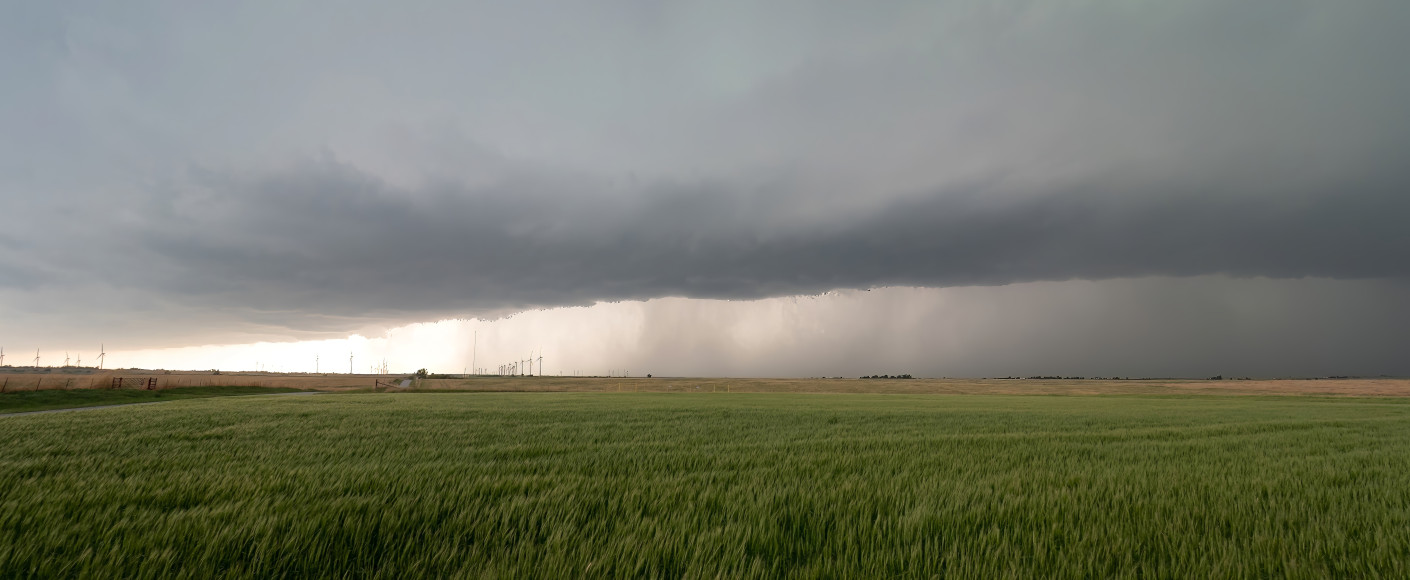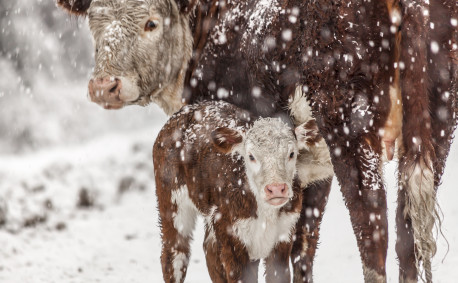How Farmers Rely on Rain
It might seem obvious why rain can be a farmer’s best friend — I mean, who doesn’t like some irrigation support from Mother Nature herself? But you might be surprised by how drastically a farm can be affected by ever-changing weather patterns.
Although I’m sure farmers appreciate April showers, weather predictions for the summer ahead likely hold most of their attention. During the summer of 2023, Kansas experienced the two highest ratings on the U.S. Drought Monitor — D3 (extreme drought) and D4 (exceptional drought). With the threat of more dry, hot summers in our region, Kansas farmers must plan for how they can make up for the lack of rain in the months ahead.
Effects of Heat and Drought Stress
Heat stress and drought stress can affect the health of any field crop, but grain crops — such as corn, wheat, soybeans and milo — are especially vulnerable during their reproductive development stage. Even a 10-hour period of extreme heat can negatively affect the timing of pollination and flowering, which means a decrease in overall yield for farmers.
Check the Kansas Drought Monitor
And even if temperatures don’t reach extreme levels, drought alone can strain farmers’ outputs. Lack of rain can lead to essential moisture evaporating out of the soil, killing ecosystems of microorganisms that provide the nutrients that help crops grow.
And it’s not just a problem for field crops. The pasture grasses and hay that make up livestock feed also benefit from these healthy soil ecosystems. Already stressed by extreme temperatures, livestock such as cattle may not have as much to eat out in the pasture, forcing ranchers to buy more feed.
The relief rain can provide at every level of farming becomes clear during times of extreme heat and drought. Luckily, farmers have ways of making up for the lack of moisture.
How Farmers Pivot When It Gets Too Dry
Especially with the recent effect of drought, Kansas farmers benefit from modern technology to adapt to the changing weather patterns. Some irrigation systems have advanced to the point that farmers can even manage their pivots from their phones.
Helpful resources such as K-State Research and Extension’s Kansas Mesonet are available to the public. This series of weather stations across the state allow farmers to reliably check soil moisture at varying depths and help them determine their crops’ unique irrigation needs.
Although these resources can assist farmers in the short term, researchers suggest that long-term sustainable farming practices will improve crop yields the most. Processes such as crop residue management, for example, use leftover materials from previous harvests to protect the soil and ensure better water retention.
Techniques such as cover crops and crop rotation help farmers maintain the soil by allowing different crops to enrich the soil in unique ways. Growing a variety of crops also helps the soil maintain water infiltration, porosity and diverse root systems that allow a range of microbial ecosystems to maintain nutrient-rich soil.
Agronomists are also working on long-term solutions and ways to provide farmers with the most effective tools possible. One promising direction includes developing new wheat seed varieties that can better withstand high temperatures and lack of moisture.
As farmers and scientists alike follow the ongoing weather trends, the need for ways to account for heat and lack of rain will continue to be of the utmost importance. Kansas farmers know better than most that when it rains, it pours, and no matter the weather, the work never slows.





